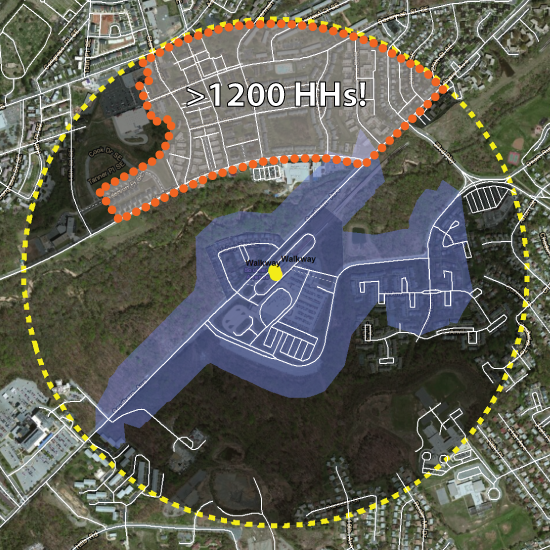How Can The Coverage of Transit Walk Sheds Be Increased?
Pedestrian infrastructure can cost-effectively increase coverage of transit walk sheds.
The roadway networks of most station areas are mostly unchangeable. Existing structures on private property create unmovable barriers and usually prevent new roads from being added to the network. However, there is still opportunity to add pedestrian facilities that would increase a station’s walk shed in a relatively cost-effective way.
Take the example of Southern Ave Metrorail station. We previously noted how a large number of customers drive to the station from between one and three miles away. We discussed several reasons for this tendency to drive to Southern Ave, including the proximity to parks on both sides of the station. The map below shows the transit walk shed of Southern Ave station.

Current walkshed of Southern Ave station. The area with the orange dotted border contains over 1,200 households that could be within a half mile of Metrorail if a direct pedestrian connection were built.
But what if a pedestrian path could be built to connect the station to the neighborhood to the north?
If a well lit, safe pedestrian path were constructed between the station and the orange-dotted area on the map, it could expand the walkshed to include up to 1,200 additional households in DC. This new connection would likely increase ridership at Southern Ave. and might even generate enough additional fare revenue to fund the construction of the trail.
Metro’s Office of Planning is currently evaluating the walk sheds of our rail transit stations. What other opportunities do you see for cost-effectively increasing the walk sheds around Metrorail stations?


Recent Comments